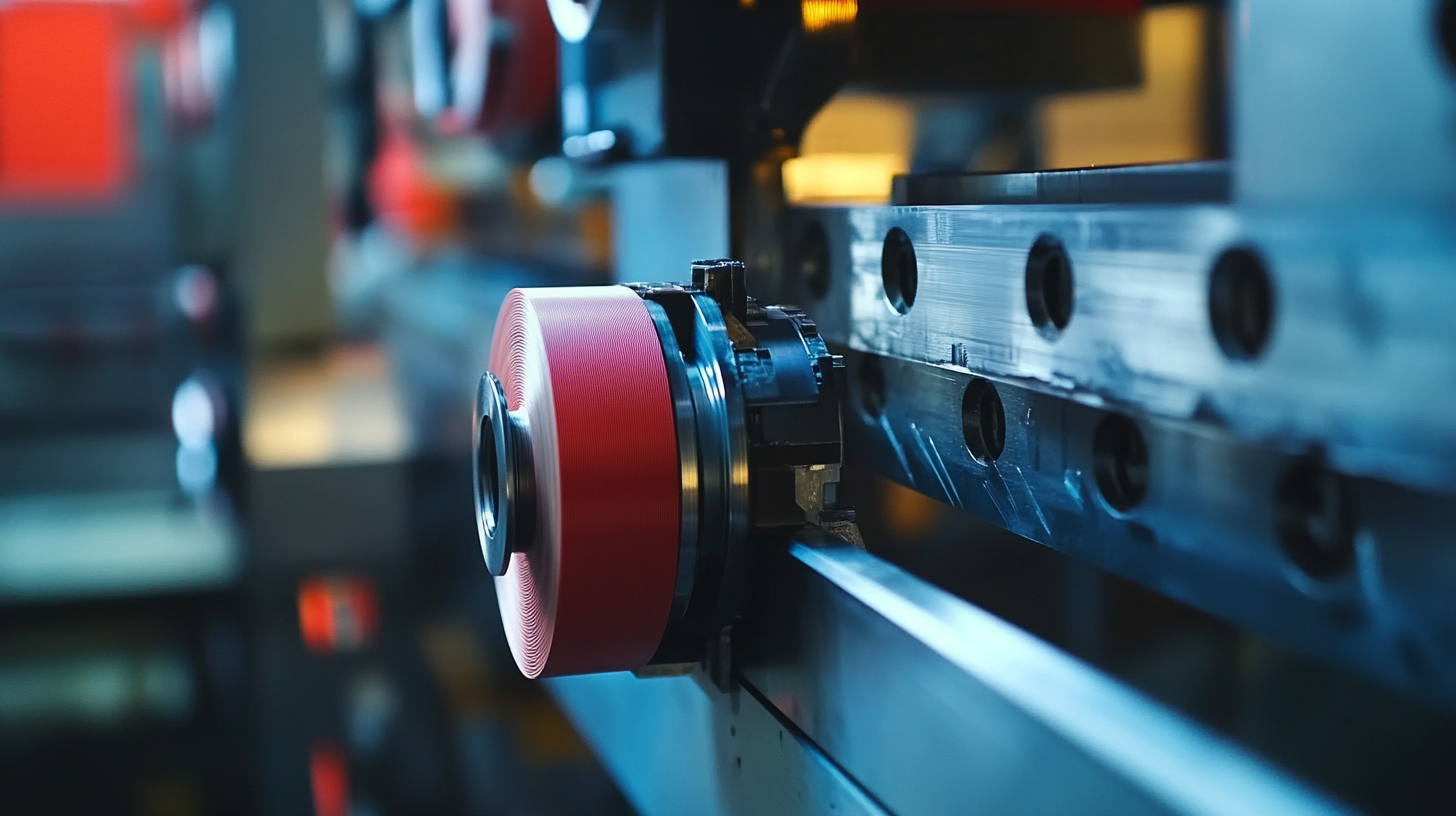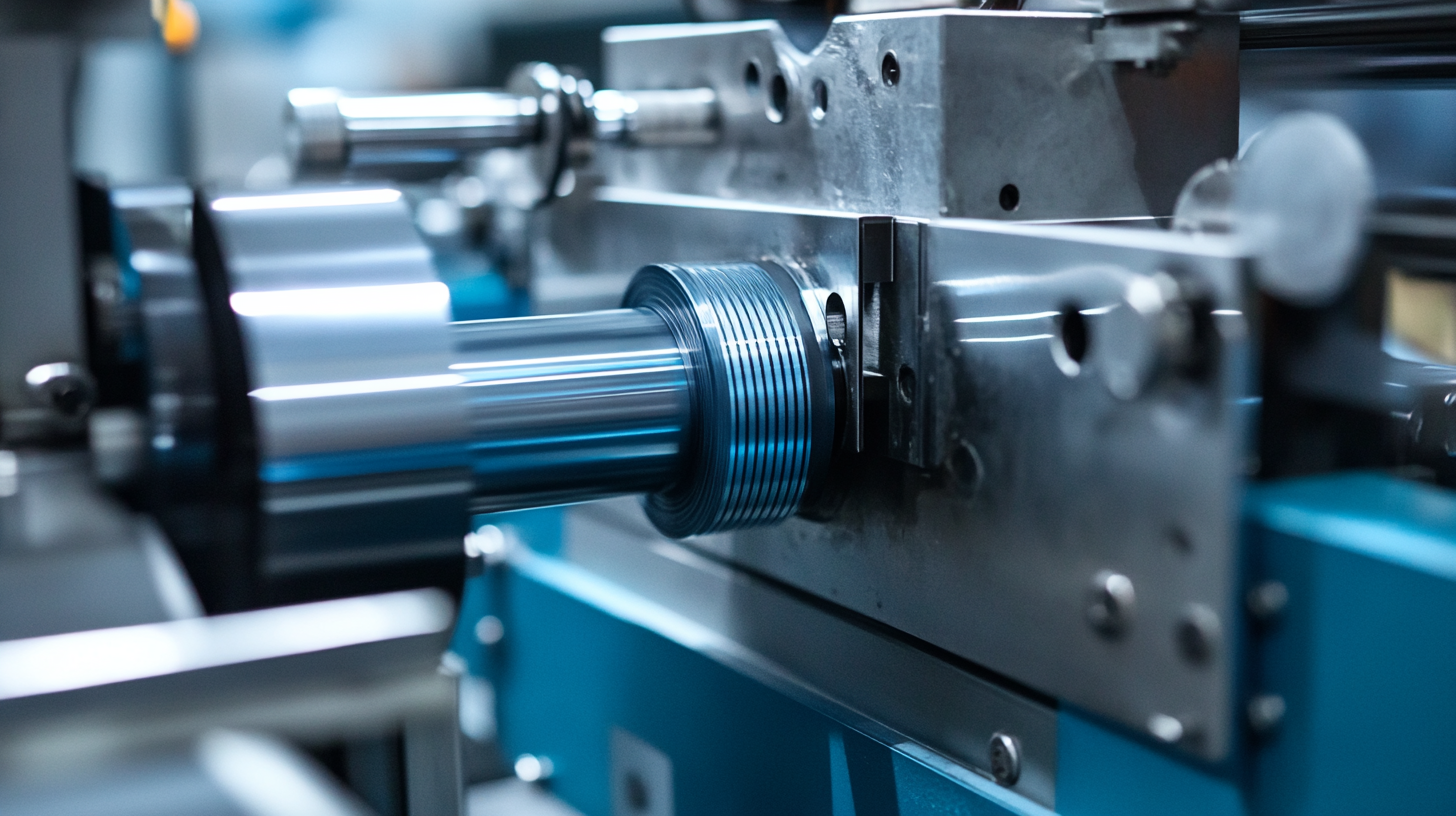
Mastering the Best Slitting Machine Techniques for Optimal Performance
 In the rapidly evolving manufacturing landscape, mastering the capabilities of a Slitting Machine is more critical than ever for enhancing operational efficiency and productivity. According to a recent industry report by Smithers, the global market for slitting machines is projected to reach USD 1.5 billion by 2025, with a compound annual growth rate (CAGR) of 4.3%. This growth emphasizes the importance of honing techniques to achieve optimal performance and reduce operational costs. Integral to this process is understanding the advantages of robust after-sales service and maintenance strategies, which not only lower repair costs but also extend the lifespan of the machinery. In this blog, we will explore effective slitting techniques and provide insightful "how to" guidance, enabling manufacturers to leverage their Slitting Machines to their full potential and maintain a competitive edge in the industry.
In the rapidly evolving manufacturing landscape, mastering the capabilities of a Slitting Machine is more critical than ever for enhancing operational efficiency and productivity. According to a recent industry report by Smithers, the global market for slitting machines is projected to reach USD 1.5 billion by 2025, with a compound annual growth rate (CAGR) of 4.3%. This growth emphasizes the importance of honing techniques to achieve optimal performance and reduce operational costs. Integral to this process is understanding the advantages of robust after-sales service and maintenance strategies, which not only lower repair costs but also extend the lifespan of the machinery. In this blog, we will explore effective slitting techniques and provide insightful "how to" guidance, enabling manufacturers to leverage their Slitting Machines to their full potential and maintain a competitive edge in the industry.
Understanding Slitting Machine Technology for Enhanced Efficiency
Understanding slitting machine technology is essential for businesses looking to enhance production efficiency and product quality. Slitting machines are pivotal in various industries, allowing for precise cutting of materials such as paper, plastic, and metal into smaller rolls or sheets. The technology behind these machines has evolved significantly, incorporating advanced features such as automated adjustments, tension control, and speed optimization. By leveraging these innovations, manufacturers can streamline their processes, reduce waste, and achieve uniformity in their products.
To maximize efficiency with slitting machines, operators should focus on key techniques that enhance performance. Regular maintenance is crucial; it not only extends the lifespan of the equipment but also ensures consistent output quality. Additionally, understanding the material properties being processed can lead to better blade selection and settings adjustment, which are critical for achieving optimal cuts. Training operators on these technical aspects can significantly lift production standards, making it easier to respond to varying demands while minimizing downtimes and operational bottlenecks. By mastering these techniques within the scope of slitting machine technology, businesses can achieve greater efficiency and responsiveness in their manufacturing processes.
Mastering the Best Slitting Machine Techniques for Optimal Performance
Key Factors Influencing Slitting Machine Performance
When it comes to slitting machines, understanding the key factors that influence performance is crucial for optimizing results in production environments. First and foremost, the quality of the cutting blades plays a significant role in ensuring clean, precise cuts. Dull or improperly aligned blades can lead to increased material waste and reduced overall efficiency. Regular maintenance and timely replacement of blades are essential practices that should not be overlooked.
Another critical factor is the tension of the material being processed. Proper tension ensures that the material remains stable throughout the slitting process, reducing the likelihood of issues such as warping or misalignment. Additionally, the speed settings of the slitting machine must be calibrated according to the specific material properties and thickness to avoid any detrimental effects on the cut quality. By effectively managing these variables, manufacturers can significantly enhance the productivity and reliability of their slitting operations, ultimately leading to better product quality and efficiency in their production lines.
| Technique | Key Factor | Performance Impact | Recommended Settings |
|---|---|---|---|
| Blade Adjustment | Angle & Height | Improves cut quality | 15° angle, 1mm height |
| Feed Rate Optimization | Speed Control | Reduces material waste | 50 ft/min |
| Tension Control | Material Tension | Enhances precision | 10-15kg tension |
| Blade Material Selection | Steel vs. Carbide | Affects longevity | Carbide for longer life |
| Regular Maintenance | Cleaning & Lubrication | Prevents downtime | Weekly checks |
Best Practices for Maintenance and Operation of Slitting Machines
Maintaining and operating slitting machines with precision is crucial for optimal performance in manufacturing. One of the best practices involves regular inspection of the blades and aligning mechanisms. Ensuring that the blades are sharp and accurately positioned can significantly reduce material waste and improve cutting quality. Additionally, operators should frequently check for any wear or damage, as this can lead to subpar results and increased operational costs.
Another critical aspect of maintenance is the lubrication of moving parts. Adequate lubrication minimizes friction and wear, extending the machine's longevity and ensuring smooth operation. Operators should follow the manufacturer’s guidelines regarding lubrication intervals and types of lubricants. Moreover, keeping the workspace clean from debris and dust will not only promote a safer working environment but also protect the machine from unnecessary wear and tear. Implementing these best practices not only enhances the operational efficiency of slitting machines but also contributes to a more productive manufacturing process.

Innovative Techniques to Maximize Output in Slitting Processes
In the fast-evolving world of manufacturing, achieving optimal performance in slitting processes is essential for enhancing productivity and ensuring quality. Innovative techniques play a pivotal role in maximizing output, allowing manufacturers to adapt to ever-changing demands. One such technique involves the implementation of advanced blade technology. Utilizing high-quality, precision-engineered blades can significantly reduce wear and improve cutting accuracy, thereby increasing the overall efficiency of the slitting operation.
Another key technique is the incorporation of automated systems and real-time monitoring. By integrating sensors and software that track the slitting process, manufacturers can identify inefficiencies and make immediate adjustments to maintain peak performance. This data-driven approach not only aids in reducing waste but also ensures consistent quality across various materials. Furthermore, adopting a preventive maintenance schedule for machines can minimize downtime, allowing for continuous production and better resource management. Embracing these innovative strategies can set the foundation for a successful slitting operation, driving both output and quality to new heights.

Case Studies: Successful Implementation of Slitting Solutions in Industry
In the world of manufacturing, the efficient use of slitting machines can significantly improve productivity and product quality. Case studies reveal that companies implementing advanced slitting solutions have realized remarkable enhancements in their operations. For instance, a leading packaging manufacturer adopted a precision slitting technique that reduced material waste by 20%. By leveraging cutting-edge technology, they not only optimized the slitting process but also gained a competitive edge in the market.
To achieve similar results, consider these essential tips: First, always choose the right blade for your materials to ensure clean and precise cuts. A mismatched blade can lead to increased wear and operational downtime. Second, regular maintenance is crucial. Keeping the machines in top shape not only extends their lifespan but also enhances performance consistency. Lastly, training staff on the latest slitting techniques can empower your team, leading to innovative solutions and improved efficiency.
Another notable case involved a textile company that streamlined their slitting operations by integrating automation. This move resulted in a 30% increase in throughput while maintaining quality standards. Implementing similar automated systems could drastically reduce labor costs and improve overall workflow in any slitting process.